
| Crotalaria Podborer (erroneously known as Argina astraea) ARCTIINI, ARCTIINAE, EREBIDAE, NOCTUOIDEA | (donherbisonevans@yahoo.com) and Stella Crossley |
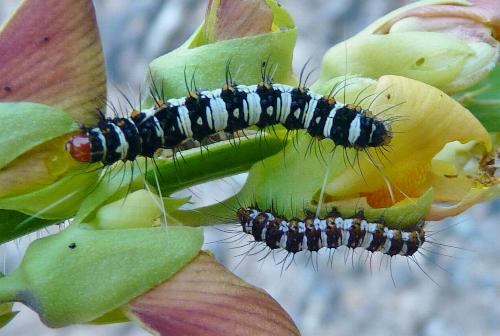
(Photo: courtesy of Valry Ryland, Magnetic Island, Queensland)

| Crotalaria Podborer (erroneously known as Argina astraea) ARCTIINI, ARCTIINAE, EREBIDAE, NOCTUOIDEA | (donherbisonevans@yahoo.com) and Stella Crossley |

(Photo: courtesy of Valry Ryland, Magnetic Island, Queensland)
The Caterpillar of this species is boldly ringed in black and white, with a broken white line along the back, and an orange verruca on each side of each segment. The caterpillar has sparse long hairs, some black and some white.
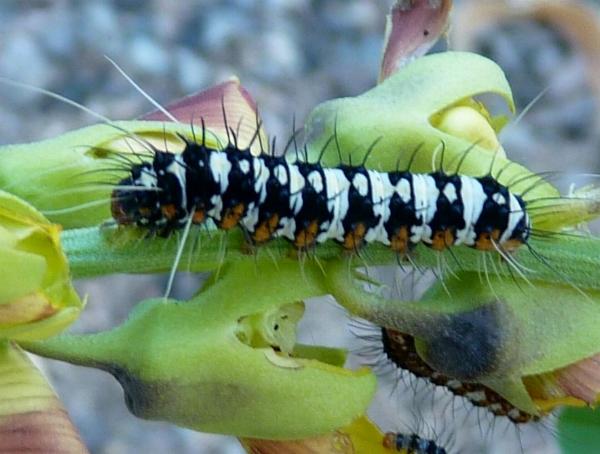
The caterpillar is known to feed on a variety of plants, including:
The early instars eat the foliage, and later instars eat the fruit and seeds.
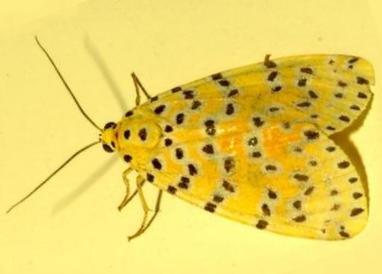
The adult moth is yellow, with each forewing having 40 similar roundish black spots having pale outlines.
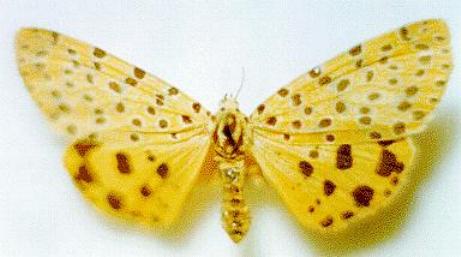
and each hindwing having a variable number of unringed black spots of various shapes and sizes. The moth has a wingspan of about 4 cms.
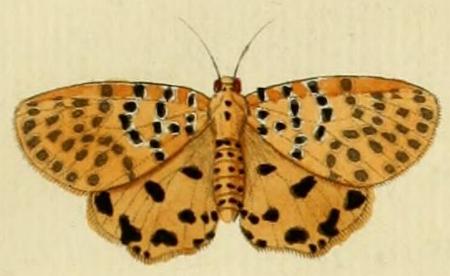
The species is found from Africa across Asia, including :
as well as in Australia in:
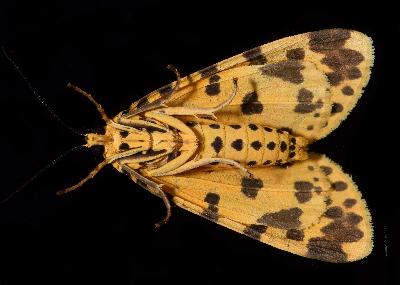
Further reading :
Ian F.B. Common,
Moths of Australia,
Melbourne University Press, 1990, pp. 36, 434.
Pieter Cramer,
Uitlansche Kapellen,
Voorkomende in de drie waereld-deelen,
Amsterdam Baalde, Volume 3 (1782), pp. 27-28, and also
Plate CCVIII, figs. C & G.
Dru Drury,
in John Obadiah Westwood:
Figures and Descriptions of Foreign Insects,
Illustrations of Exotic Entomology,
Volume 2 (1773), pp. 13-14, and
Plate 6, fig. 3.
Peter Hendry,
The Australian Arctiid Moths (Lepidoptera: Noctuoidea: Erebidae)
with emphasis on Creatonotos Gangis,
Metamorphosis Australia,
Issue 65 (June 2012), pp. 6-8,
Butterflies and Other Invertebrates Club.
Buck Richardson,
Mothology,
LeapFrogOz, Kuranda, 2008, p. 12.
Buck Richardson,
Tropical Queensland Wildlife from Dusk to Dawn Science and Art,
LeapFrogOz, Kuranda, 2015, p. 14.
Paul Zborowski and Ted Edwards,
A Guide to Australian Moths,
CSIRO Publishing, 2007, p. 18.
 caterpillar |  butterflies |  caterpillars |  moths |  caterpillar |
(updated 5 July 2013, 3 August 2023)